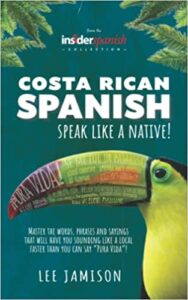Costa Rica Language Facts
Costa Rica Language Facts
Costa Rica, a small country located in Central America, is known for its beautiful landscapes, vibrant culture, and friendly people. But what is the Costa Rica language like? Is it unique to the country, or does it resemble the languages spoken in its neighboring countries? In this article, we will explore the Costa Rica language, its history, and its place in the country’s culture.
The official language of Costa Rica is Spanish, which is spoken by the vast majority of the population. However, Costa Rica has a rich history of immigration, and as a result, there are also many other languages spoken in the country. Some of the most common languages in addition to Spanish include English, Portuguese, French, and Italian.
The Spanish spoken in Costa Rica is unique in some ways, as it has been influenced by the country’s history and culture. For example, Costa Rican Spanish has a distinctive accent and vocabulary that sets it apart from other varieties of Spanish. Some common words and phrases used in Costa Rican Spanish include “pura vida” (pure life), which is used as a greeting and to express a laid-back attitude, and “tuanis” (cool), which is used to describe something that is good or enjoyable. The history of the Costa Rica language can be traced back to the 16th century, when Spanish conquistadors arrived in the region. The Spanish language quickly became the dominant language in Costa Rica, and over time, it evolved into the unique variety of Spanish that is spoken in the country today.
In addition to Spanish, there are also many indigenous languages spoken in Costa Rica. These languages belong to different language families, including the Chibchan, Chocoan, and Huetar languages. Although these languages are not as widely spoken as Spanish, they continue to be an important part of the country’s cultural heritage.
Today, the Costa Rica language continues to play a central role in the country’s culture and daily life. Spanish is the language of instruction in schools and the language used in most forms of media and communication. It is also the language used in government and in business.
Despite the widespread use of Spanish, however, the Costa Rica language is not without its challenges. One of the main challenges is the fact that there are many different accents and dialects of Spanish spoken in the country, which can make communication difficult at times. In addition, the use of indigenous languages is declining, and there is a concern that these languages may eventually disappear altogether.
